Cardiff Castle | Visit Amazing Welsh Castles
Cardiff Castle is a medieval and Victorian-era site in the centre of Cardiff, the capital of Wales. The structure combines elements from Roman times, Norman fortification, and 19th-century Gothic Revival architecture.
Its complex history spans over 2,000 years, reflecting Cardiff's development from a Roman outpost to a major urban centre.
The castle is owned by Cardiff Council and managed as a heritage attraction. It remains one of the most visited historic landmarks in Wales.
Quick Facts
Location: City centre, Cardiff, South Wales
Original construction: 1st century AD (Roman fort)
Castle type: Roman fort, Norman motte-and-bailey, Gothic Revival mansion
Built by: Initially Romans; later developed by Norman invaders and the Bute family
Ownership: Cardiff Council
Managed by: Cardiff Castle management team
Listing status: Grade I listed building
Entry: Paid admission (some grounds accessible for free to local residents with a Castle Key card)
Brief History
Cardiff Castle began as a Roman fort around the 1st century AD. It formed part of a defensive network across Roman Britain. Archaeological remains of the Roman walls can still be seen today.
In the late 11th century, Norman forces led by Robert Fitzhamon built a motte-and-bailey castle on the site. The large earth motte remains a prominent feature. Stone fortifications followed during the 12th and 13th centuries, and the site became a key stronghold in the Welsh Marches.
The castle passed through several noble families before coming under the control of the Bute family in 1766. In the 19th century, the 3rd Marquess of Bute, one of the richest men in Britain, commissioned architect William Burges to transform the medieval castle into a lavish Gothic Revival mansion. Work took place between the 1860s and 1890s.
In 1947, the Bute family gifted the castle to the City of Cardiff. Since then, it has served as a public heritage attraction, also used for ceremonial and civic events.
Features and Layout
Cardiff Castle is laid out across a large walled enclosure. Its key features reflect several historical periods.
The Norman motte is near the centre, topped by a 12th-century stone shell keep. A steep staircase leads visitors up the motte, offering views over the city. The inner bailey surrounds the motte, once containing domestic buildings, now mostly open space.
The Roman walls can be seen along the castle’s perimeter. A modern walkway highlights their position, with exposed sections showing original stonework and red Roman brick.
The Victorian Gothic mansion, designed by William Burges, sits within the walls. It contains themed rooms including the Arab Room, the Banqueting Hall, and the Library. Each features intricate carvings, murals, and decorative tiles inspired by mythology, history, and nature.
The wartime tunnels, built into the castle walls during the Second World War, were used as air raid shelters. Today, they house a small exhibition with sound effects and period reconstructions.
A small animal wall, built in the 1890s, lines the southern edge. It features sculpted animals including a bear, a pelican, and a raccoon.
Did You Know?
The Arab Room ceiling in the mansion was described by art critic Nikolaus Pevsner as "the most spectacular piece of decoration in the country".
Images


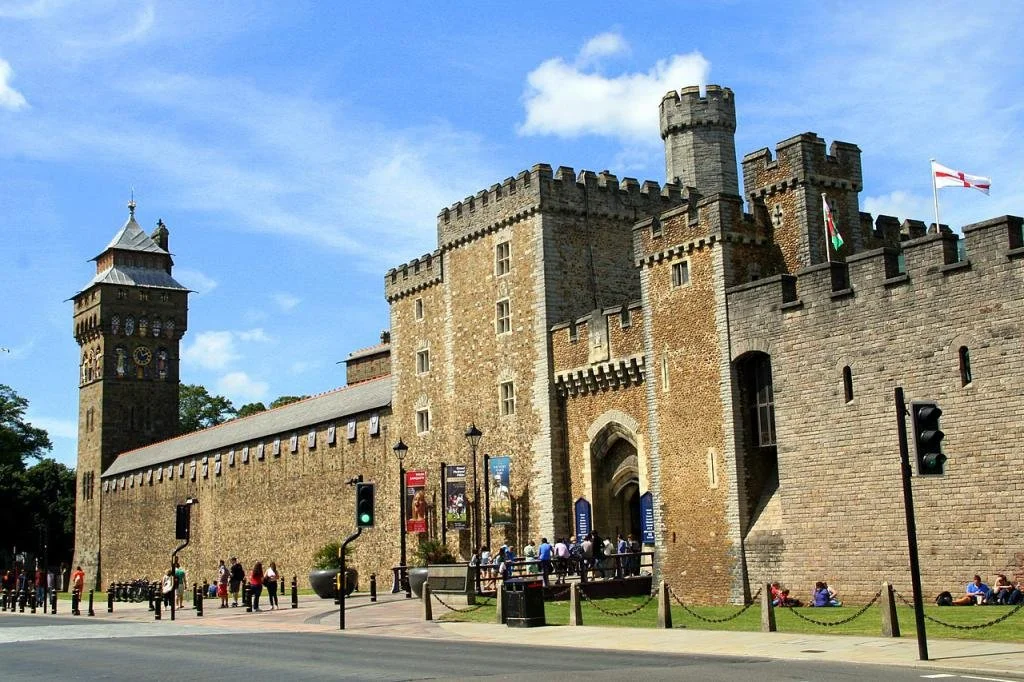
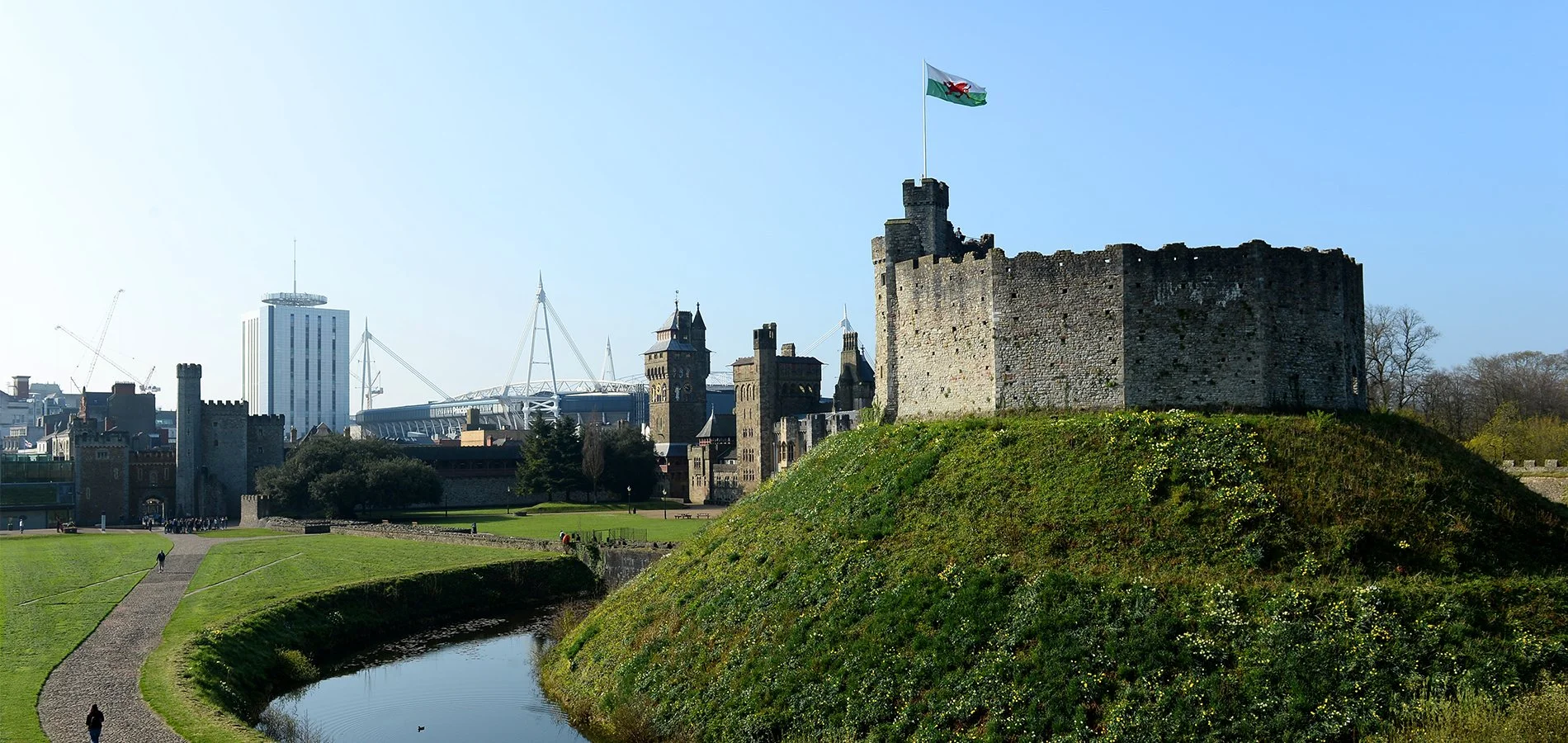
Legends and Stories
Several stories and legends are linked to Cardiff Castle, spanning Roman times to the Victorian period.
A local tradition suggests that the site may have been occupied by a Roman officer named Magnus Maximus, later proclaimed emperor by his troops. While no direct evidence supports this, the Roman origins of the site make it a plausible base for imperial officials. This idea has been promoted in local heritage literature and visitor materials.
During the Norman period, the castle was the site of notable imprisonment. Robert Curthose, eldest son of William the Conqueror, was held here from 1126 until his death in 1134. This is documented in medieval chronicles and noted by Cardiff Castle’s own historical displays.
In the Victorian period, the castle’s eccentric designs led to speculation about secret messages and occult symbolism in William Burges’s interiors. These ideas appear in guidebooks and discussions among heritage enthusiasts but are not supported by formal evidence.
A recurring visitor tale found on TripAdvisor reviews describes "unexplained chills" in the shell keep and air raid tunnels. Some visitors suggest this is linked to the site’s wartime history or medieval use, although no formal ghost story is attached to the castle.
Source for visitor stories:
TripAdvisor – Cardiff Castle Reviews
Visiting
Cardiff Castle welcomes visitors every day of the year, except Christmas Day (25 December), Boxing Day (26 December), and New Year’s Day (1 January).
Opening Times
March to October
Monday–Friday: opens 10:00, last entry 17:00, closes 18:00
Weekends and bank holidays: opens 09:00, last entry 17:00, closes 18:00
November to February
Monday–Friday: opens 10:00, last entry 16:00, closes 17:00
Weekends and holidays: opens 09:00, last entry 16:00, closes 17:00.
Allow at least 90 minutes for a standard visit, though full‑day access is provided on your ticket.
Ticket Prices (2025)
Adult: £16
Children (ages 5–16, must be with adult): £10.50
Senior / Student / Disabled: £12.50 (includes free carer for each disabled ticket)
Family (2 Adults + 2 Children): £42.50
Senior Family (2 Seniors + 2 Children): £36.50
Under‑5s: free.
Annual passes and Castle Key holders (local residents) can enter without booking.
Facilities and Accessibility
Ticket office & guided tours available onsite; upgrades can be requested at the desk.
Public Square (outer green space) is free to enter, with café/bar, gift‑shop, toilets, and sanitiser stations.
Dogs: Allowed in the Public Square on leads. Inside buildings and Inner Green only certified assistance dogs permitted.
Bikes: Permitted in the Public Square but not within ticketed areas.
Accessibility: Staff available for assistance. BSL tour guide available to download before visit.
Directions
Cardiff Castle sits in the city centre, a short walk from major transport hubs. Local parking is available nearby. Use public transport to avoid congestion on event days.
Dog Policy Summary
Dogs welcome (on lead) in the Public Square
Only assistance dogs allowed inside buildings and Inner Green.
Nearby Attractions
Several visitor destinations lie within easy reach of Cardiff Castle:
Bute Park
The historic landscaped park surrounding the castle, designed in the late eighteenth century by Capability Brown and further developed for the 3rd Marquess of Bute. The park spans some 130 acres and features gardens, arboretum, and riverside paths.
Animal Wall
A Grade I listed sculptured wall featuring fourteen animal sculptures, created in the 1890s by William Burges’ team and later extended by Alexander Carrick; it now lines the edge of Bute Park beside the castle entrance.
Firing Line Museum
A regimental military history museum housed within the castle precinct. It covers over 300 years of British military service including local Welsh regiments.
Castell Coch
A fairy‑tale Gothic Revival castle built by the same patron‑architect partnership (Bute and Burges). It lies a short drive from central Cardiff and is managed by Cadw, with separate admission charges.
Visitor Tips
Buy tickets online in advance during summer or school holidays to avoid queues
Arrive early to climb the motte and shell keep before crowds build
Use public transport if visiting on event days – city centre parking fills quickly
Download the official Cardiff Castle BSL guide or audio guide before visiting
Wear sturdy footwear – many steps, uneven stones, and tight staircases
Check the weather – exposed sections like the keep are unsheltered
Allow extra time for the Victorian house if you're joining a guided tour
Bring a refillable water bottle – water stations available inside the site
Local residents should apply for a free Castle Key to access the grounds year-round
FAQs
-
Most visitors spend 1.5 to 2 hours. If you plan to take a guided tour of the Victorian mansion, allow 3 hours.
-
Yes, photography is allowed for personal use. Tripods and commercial photography require prior permission (Cardiff Castle FAQ).
-
Yes, with some limitations. The visitor centre, grounds, and Interpretation Centre are wheelchair accessible. The Norman keep and house have stair access only (Cardiff Castle Accessibility).
-
It’s a free resident pass available to anyone living or studying in Cardiff. It provides unlimited free access to the Public Square and discounts for castle entry (Cardiff Castle Key Scheme).
-
Yes. There are standard admission tickets and optional guided house tours. These cost extra and focus on the interior of the Victorian mansion (Cardiff Castle Tours).
Wrapping it Up
This castle is a multi-period site that reflects the layered history of Wales. From Roman to Norman to Victorian, the site offers a wide historical range within a single walled complex. Its central location and accessible facilities make it a key cultural destination for visitors to Cardiff.
Sources
Opening Times & Ticket Prices – Cardiff Castle
Official site with current admission rates, guided‑tour upgrades, and annual pass info for 2025
URL: https://www.cardiffcastle.com/times-prices/
Guided Tours – Cardiff Castle
Details of house‑tour pricing (extra fees for deeper access to Victorian interiors)
URL: https://www.cardiffcastle.com/castle-tours/
History – Cardiff Castle
Official history page outlining the Roman origins and successive fort phases
URL: https://www.cardiffcastle.com/history/
The Bute Family – Cardiff Castle History
Describes ownership by the Bute family until the 1947 gift to the city
URL: https://www.cardiffcastle.com/history/butes/
Cardiff Castle Wikipedia entry
Summary of Roman, Norman and later phases; motte‑and‑bailey details and layout
URL: https://en.wikipedia.org/wiki/Cardiff_Castle
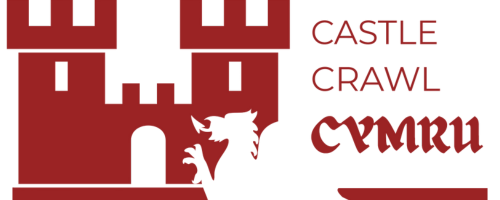

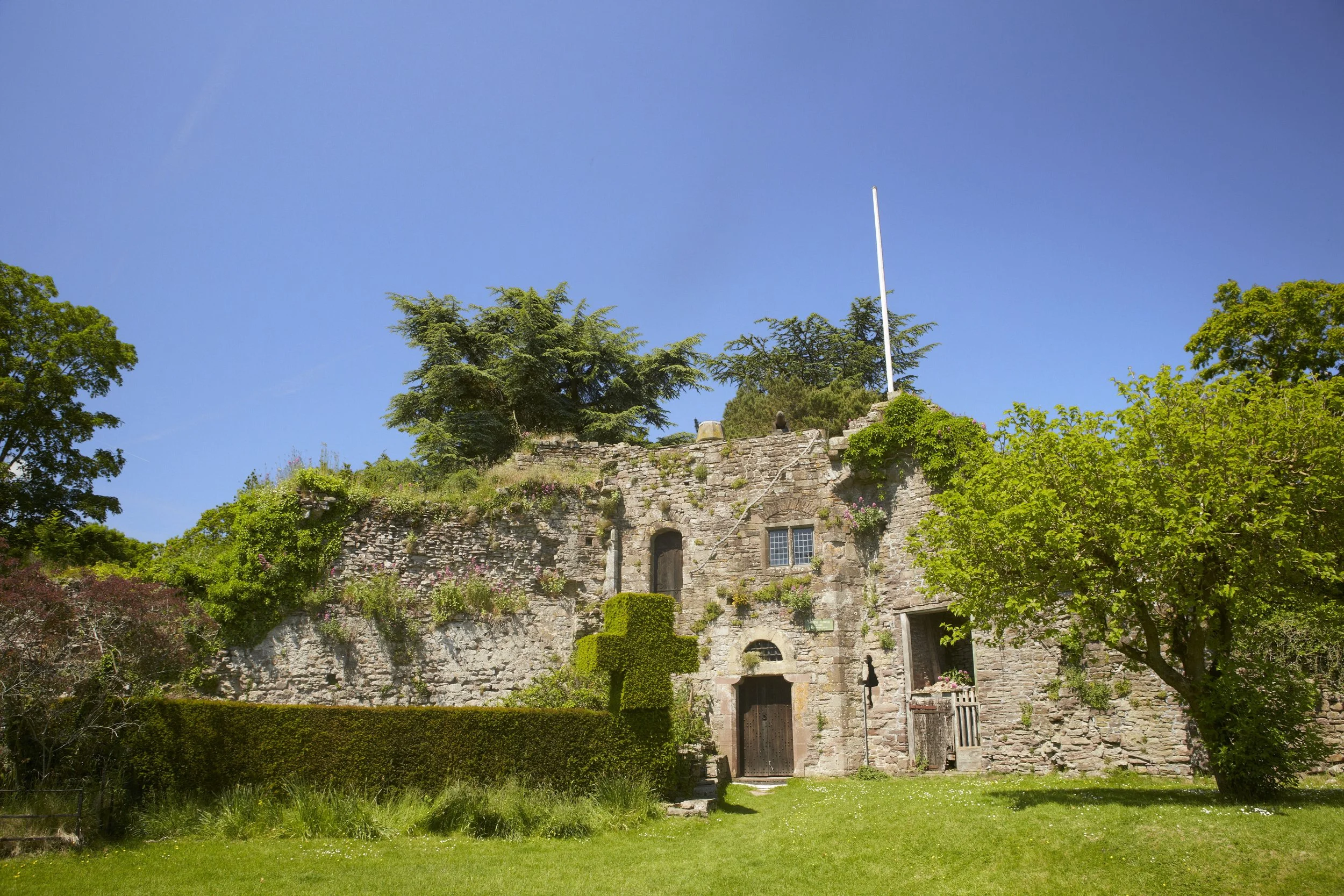
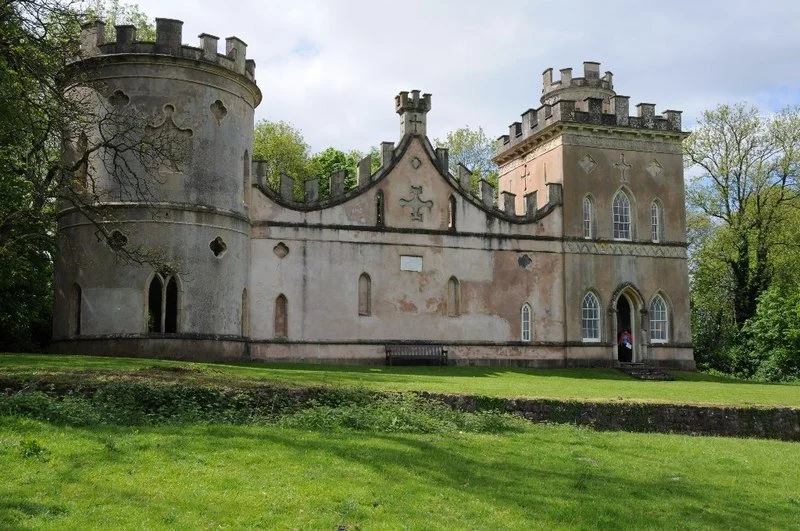
Cardiff Castle is a medieval and Victorian-era site in the centre of Cardiff, the capital of Wales.